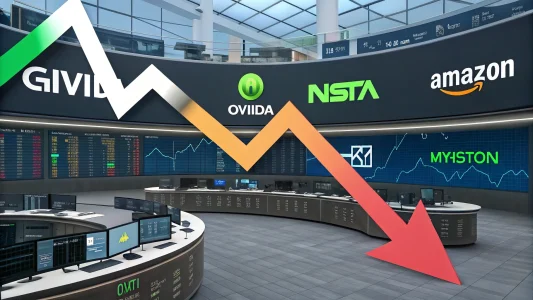The discussion focuses on how upcoming auto tariffs may affect vehicle prices and the overall auto market. Analysts and industry experts have noted that consumers could face increased costs soon. The conversation explains the potential extra spending on vehicles and the possibility that dealerships and automakers will see slimmer profit margins. Specific vehicle types, such as SUVs and sedans, are discussed and compared between cars made in America and those produced overseas.
Table of Contents
ToggleOverview of Auto Tariffs and Market Reaction
Recent insights reveal that auto tariffs are set to drive vehicle prices upward. Experts warn that car prices could rise significantly. Industry analysts have pointed to a potential increase of up to $10,000 on specific models. This projected cost jump has immediate and longer-term consequences for the automotive market. A well-known industry commentator advised prospective buyers to consider purchasing a car before the tariffs take full effect.
The tariffs are expected to affect different market segments in various ways. The increase in cost will not be absorbed entirely by consumers. Instead, financial burdens will fall on both buyers and sellers. Analysts from a significant financial institution noted that buyers might cover roughly half the increase. The other half of the cost will likely erode the profit margins of both car dealerships and manufacturers.
Tariffs have a history of influencing market behavior. Consumers often rush to complete purchases before tariffs are implemented. Sellers may adjust pricing strategies in anticipation of market shifts. This situation creates a dynamic scenario where timing becomes essential for potential buyers.
View this post on Instagram
Consumer Considerations and Financial Implications
Consumers who are considering a car purchase soon are advised to monitor market updates closely. Financial experts suggest that market conditions may worsen the longer buyers wait. With a possible price jump reaching significant figures, many individuals will likely need to budget more than they initially planned.
The projected increase may require buyers to re-evaluate their financing options. Car loans, lease agreements, and saving strategies might be adjusted to account for a higher cost of ownership. Experts explain that the timing of a purchase is essential in managing extra expenses. In light of the tariffs, it is recommended that buyers act with caution and awareness of future price trends.
The emphasis on purchasing before tariffs become fully enforced reflects a broader trend in consumer behavior. Economic adjustments such as these are part of a cyclical market pattern. Buyers who act promptly may secure a deal with lower prices. Conversely, those who delay their decision might face an immediate increase in cost.
Differences by Vehicle Type and Country of Manufacture
The conversation also highlights how various types of vehicles will experience different degrees of cost increase. In particular, sports utility vehicles (SUVs) are expected to see a higher cost increase compared to sedans. Consumers looking for larger vehicles may need to prepare for a more significant percentage adjustment in the final price.
The analysis further extends to how vehicles manufactured in America compare against those with significant parts sourced from abroad. There is a distinctive discussion about what qualifies a car as “American-made” based on several factors. For instance, criteria include the assembly location, the source of components, and the overall manufacturing process.
Detailed evaluations have provided rankings for vehicles making the most prominent claims to being American-made. Based on these established criteria, brands like Tesla, Honda, Volkswagen, Toyota, and Lexus have been highlighted in the top ten list. These vehicles are anticipated to see the smallest price increases due to tariffs. Their ranking suggests they rely on production or parts less susceptible to the new tariff measures.
Implications for Dealerships and Automakers
The increased tariffs are not solely a burden on consumers. Car dealerships and automakers also face financial challenges. With a substantial portion of the price increase likely to be absorbed through lower profit margins, the overall health of auto businesses may be impacted.
Dealerships that operate on thin margins may struggle to recoup losses generated by tariff-induced price hikes. The extra costs forced upon these sellers can result in lower profits from each sale. This financial squeeze could lead dealerships to adjust their business models. Some dealers might offer promotions or limited-time discounts to maintain customer interest.
Automakers are similarly under pressure. Investment in manufacturing and supply chain processes may require reevaluation. Companies might opt to source more components domestically to mitigate the effects of tariffs. Adjusting manufacturing bases can help reduce vulnerability to sudden tariff changes. These strategic moves can help ensure stable financial performance during uncertain market conditions.
Analysis of American-Made Vehicle Ranking
A detailed analysis has emerged that compares vehicles based on their American-made credentials. This assessment includes several factors, including where the vehicle is assembled and its parts originate. A notable discussion point emphasizes that not all vehicles marketed as American meet strict criteria.
The criteria arise from multiple aspects. For example, a vehicle might be assembled in America, yet many parts might be obtained from foreign suppliers. Such an approach undermines the overall claim of being truly American-made. The rankings provided in the discussion highlight notable brands that satisfy these measures.
Among the top-ranked vehicles are those from companies such as Tesla, Honda, Volkswagen, Toyota, and Lexus. These companies continue to perform well on lists that rank their adherence to American manufacturing benchmarks. The high ranking indicates they are less likely to bear high tariff increases. This result may stem from their strategic sourcing and manufacturing methods.
Key Considerations for Car Buyers
Several primary issues have emerged from the discussion. These points help consumers understand the broader implications of tariff changes and decide the appropriate time to purchase.
- Consumers should be aware of significant price increases. Analysts predict that some vehicles could be charged up to $10,000 extra.
- Buyers may end up shouldering half the cost increase while the remaining cost eats into dealership and automaker profits.
- SUVs are set to experience a higher cost adjustment compared to sedans.
- Vehicles with strong claims to be American-made, as identified in rankings, will likely experience the smallest price jumps.
- Many traditional brands might face higher tariff hits, meaning consumers who are sensitive to price increases should consider alternatives.
- Timing is critical; purchasing a vehicle before new tariffs can offer immediate savings.
Additional Context on Tariff Developments
Tariffs have been discussed in policy and economic circles for many years. They serve as a policy tool and a protection mechanism for domestic industries. The auto sector is susceptible to such measures. Changes in tariff policy can affect production, supply chains, and even international relations.
In the current situation, analysts point to market forecasts that underscore an impending rise in vehicle costs. Economic models and historical data suggest that these adjustments may be part of broader trade policy shifts. Stakeholders in the auto industry, including consumers, dealers, and manufacturers, have been tracking any indications of new requirements or adjustments.
Policy decisions on tariffs often arise from broader goals, such as balancing trade accounts and protecting domestic production. In the auto industry, such measures can directly affect competition. Companies that rely on an international supply base may be vulnerable during abrupt policy changes.
Practical Advice for Consumers
For consumers, timing remains a critical element in navigating these changes. Experts recommend that potential car buyers consider purchasing before the new tariffs take full effect. By acting promptly, buyers may secure a vehicle at a lower price than possible after the tariffs are implemented.
Buyers should do thorough research on the vehicles they are considering. Understanding the differences between models and brands can help them make informed decisions. For example, buyers looking for SUVs should be prepared for steeper price increases than those interested in sedans.
Buyers should also pay attention to announcements from the auto industry. Updates regarding tariff schedules, exemptions, or policy modifications may affect the market even after initial predictions. Using up-to-date information can provide a competitive edge when timing a purchase.
Another practical tip involves considering the long-term impact of these tariffs. While the immediate effect is a noticeable price hike, the secondary effects on repair costs, insurance premiums, and maintenance should also be monitored. A well-rounded approach that considers both the direct and indirect costs can help buyers budget effectively.
Industry Perspectives and Broader Implications
Industry experts have expressed varied views regarding the tariffs’ overall impact. Some analysts believe that the tariffs’ influence on the market will be modest if consumers act quickly. Others feel that the broader economic tensions could lead to continued fluctuations in auto prices.
The debate over these tariffs has led some to question the long-term competitiveness of domestic automakers. As rankings have shown, vehicles from traditional American brands may not score well on the criteria that protect from high tariff increases. This reality could lead consumers to explore alternative brands better positioned in the current environment.
Consumer Decision-Making in a Shifting Market
Making informed decisions in light of tariff changes requires that consumers track various factors. Overall market sentiment, historical data, and emerging trends all play a role in the decision-making process. Buyers can benefit from a comprehensive approach that combines current market analysis with practical advice.
One significant aspect of consumer decision-making involves financial planning. Consumers must adjust their budgets accordingly with the possibility of a sudden price increase. Reviewing available financing plans and exploring different payment options can be essential steps before making a purchase.
In addition to financial concerns, consumers should assess the specific needs that influenced their vehicle choices. Decisions on vehicle type, brand preference, and overall usage should all be factored into the equation. Researching historical price trends may provide helpful insights for buyers focused on efficiency and cost-effectiveness.
Long-Term Outlook and Strategic Considerations
In the months and years to come, tax and tariff policies may continue to influence the choices of manufacturers and consumers alike. Manufacturers might increase domestic production capacities or revise sourcing strategies. Such adjustments can help alleviate the pressure on profit margins and stabilize market prices.
Economic trends indicate that policy shifts such as these often have a lasting impact on industry practices. Revenue models, supply chain decisions, and product lines could all undergo revisions in response to the new tariff landscape. The broader implications of these changes extend well beyond immediate price increases.
Consumers can also benefit from watching these trends, which may influence resale values and overall vehicle performance in subsequent years. A stable market, supported by adaptable manufacturing practices, could help moderate future price increases.
Conclusion
The discussion regarding auto tariffs and their potential to push up vehicle prices is a critical reminder for consumers and industry insiders. With some vehicles projected to face an increase of up to $10,000, buyers who wish to avoid extra costs are urged to consider purchasing soon. The financial burden is expected to be split evenly between the consumer and the dealership, which may compromise profit margins for both parties.
Additionally, the analysis shows that SUVs will likely feel the effects more strongly than sedans. Meanwhile, vehicles that adhere to stringent manufacturing standards and qualify as truly American-made tend to suffer the most minor price adjustments. Traditional American brands that fall lower on these rankings are expected to see larger hikes.
Frequently Asked Questions
Q: How will auto tariffs affect consumer vehicle prices?
Analysts predict that tariffs might lead to a significant increase in vehicle prices. Some models could see extra costs of up to $10,000. Buyers may end up paying half of this amount while sellers experience reduced profit margins.
Q: What does it mean when a vehicle is described as American-made?
A vehicle is considered American-made based on several factors, such as the assembly location, the origin of its parts, and overall manufacturing practices. Ratings and lists that rank vehicles on these criteria help consumers understand which models might face lower tariff increases.
Q: Which types of vehicles are expected to see the highest increase in costs due to tariffs?
Larger vehicles, like SUVs, are projected to be more affected by the tariffs than sedans. Buyers planning to purchase these types of vehicles should be prepared for a higher price adjustment amid these market changes.

















